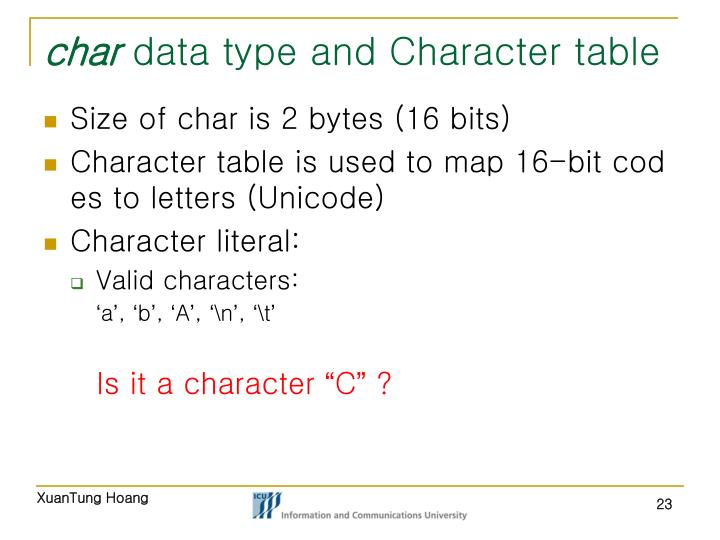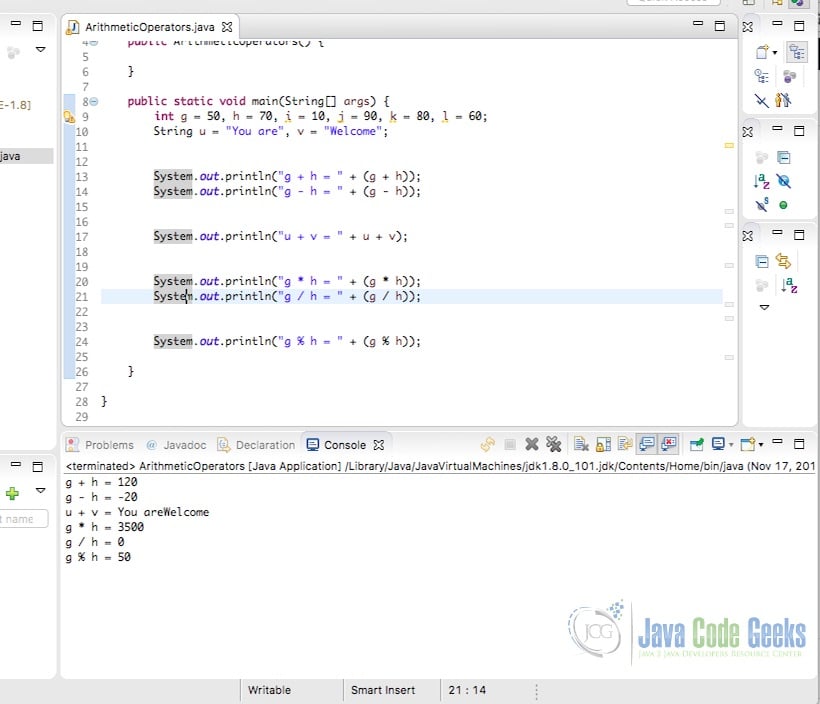

Char math operator to string java full#
This supports the full range of Unicode characters via the UTF-8 encoding. The built-in concrete type used for strings (and string literals) in Julia is String.There are a few noteworthy high-level features about Julia's strings:
Char math operator to string java code#
When this happens, modifying the code to handle non-ASCII data is straightforward. If such code encounters non-ASCII text, it will gracefully fail with a clear error message, rather than silently introducing corrupt results. In particular, you can write C-style string code to process ASCII strings, and they will work as expected, both in terms of performance and semantics. Julia makes dealing with plain ASCII text simple and efficient, and handling Unicode is as simple and efficient as possible. Depending on your needs, you can either ignore these complexities entirely and just pretend that only ASCII characters exist, or you can write code that can handle any of the characters or encodings that one may encounter when handling non-ASCII text. The Unicode standard tackles the complexities of what exactly a character is, and is generally accepted as the definitive standard addressing this problem. There are, of course, many other characters used in non-English languages, including variants of the ASCII characters with accents and other modifications, related scripts such as Cyrillic and Greek, and scripts completely unrelated to ASCII and English, including Arabic, Chinese, Hebrew, Hindi, Japanese, and Korean. These characters are standardized together with a mapping to integer values between 0 and 127 by the ASCII standard. The characters that English speakers are familiar with are the letters A, B, C, etc., together with numerals and common punctuation symbols. Of course, the real trouble comes when one asks what a character is. Strings are finite sequences of characters. Instrumenting Julia with DTrace, and bpftrace.

Reporting and analyzing crashes (segfaults).Static analyzer annotations for GC correctness in C code.Proper maintenance and care of multi-threading locks.printf() and stdio in the Julia runtime.Talking to the compiler (the :meta mechanism).High-level Overview of the Native-Code Generation Process.Noteworthy Differences from other Languages.Multi-processing and Distributed Computing.Mathematical Operations and Elementary Functions.


 0 kommentar(er)
0 kommentar(er)
